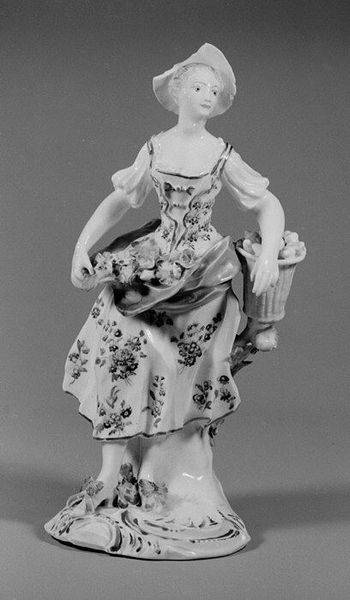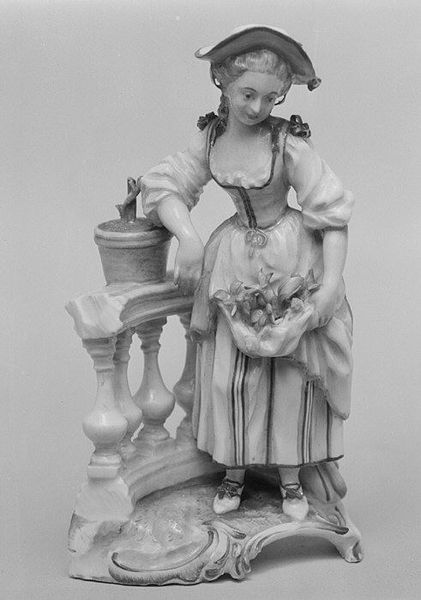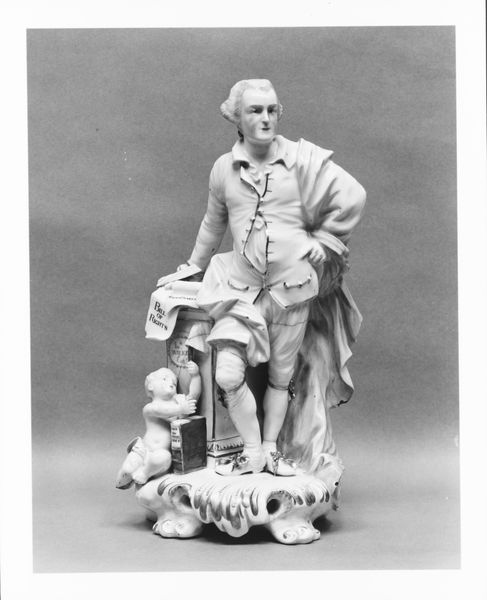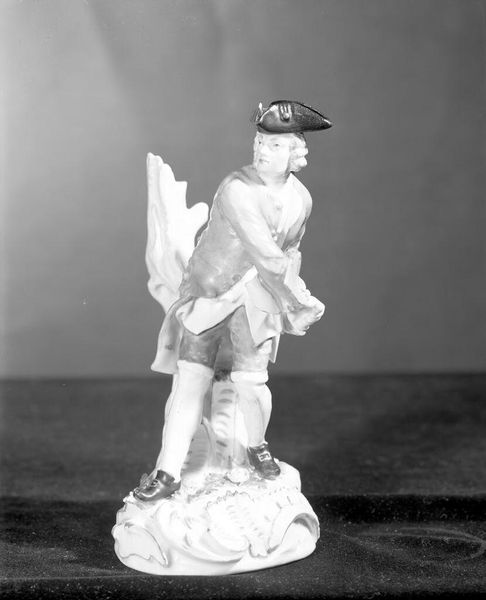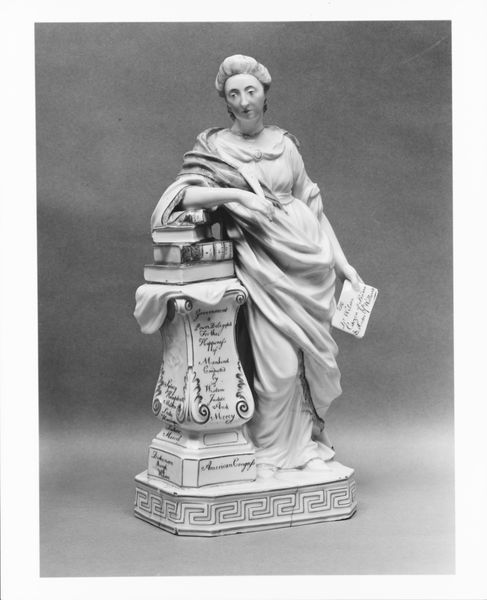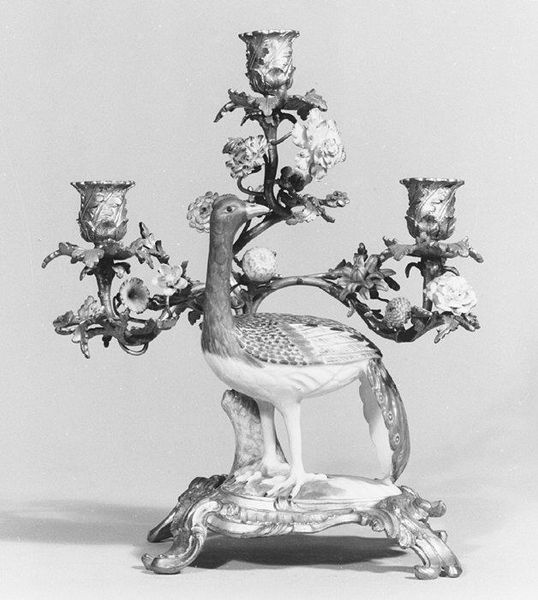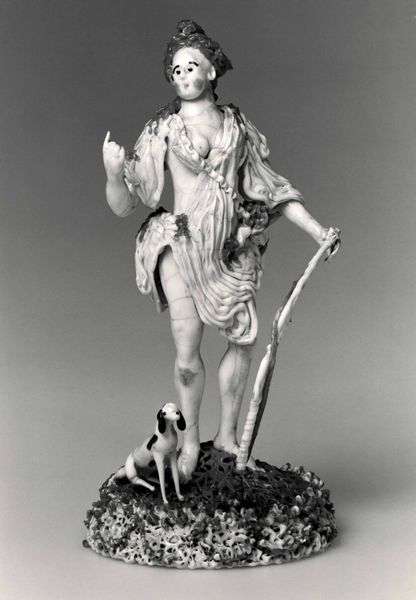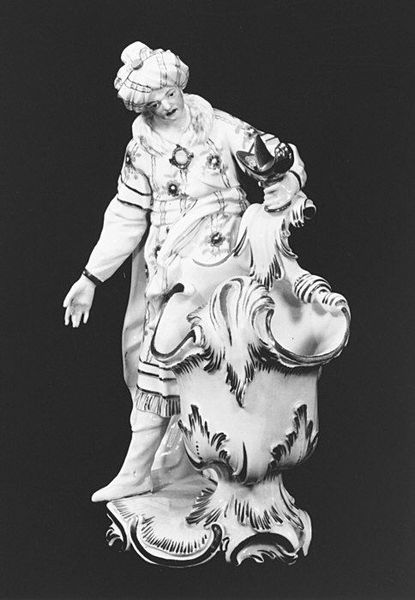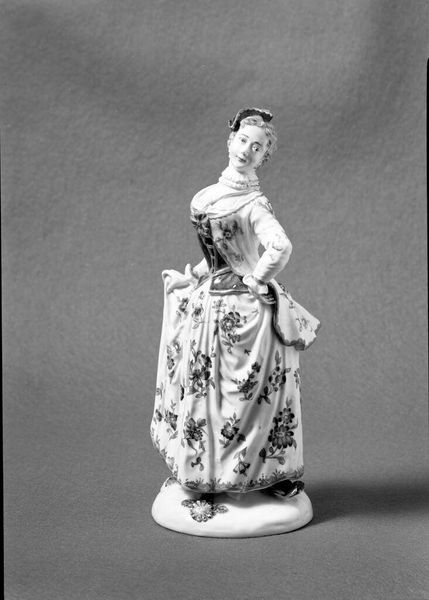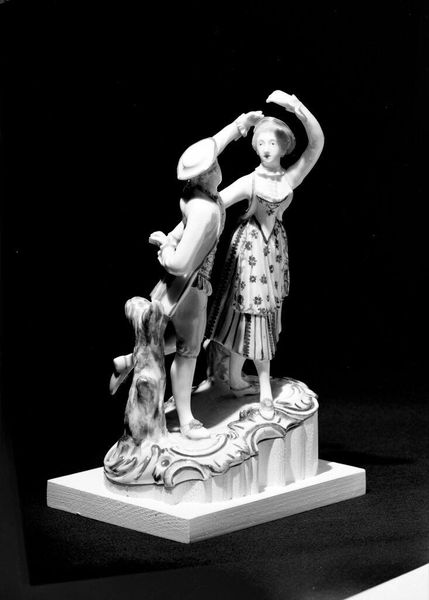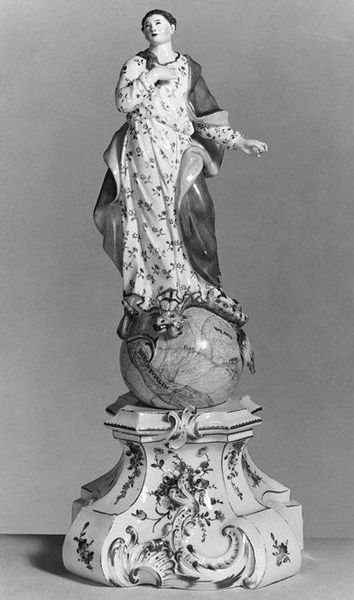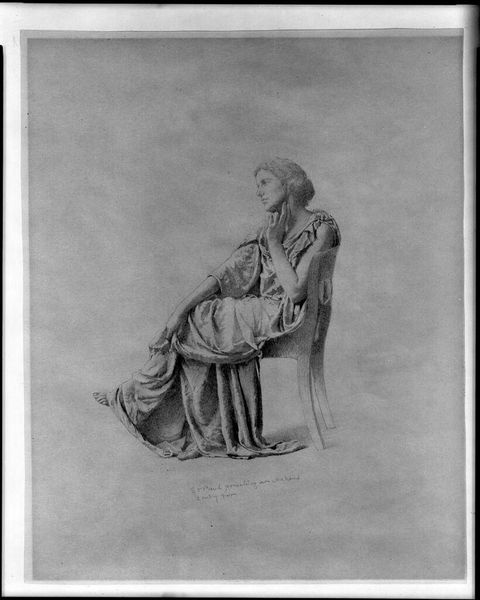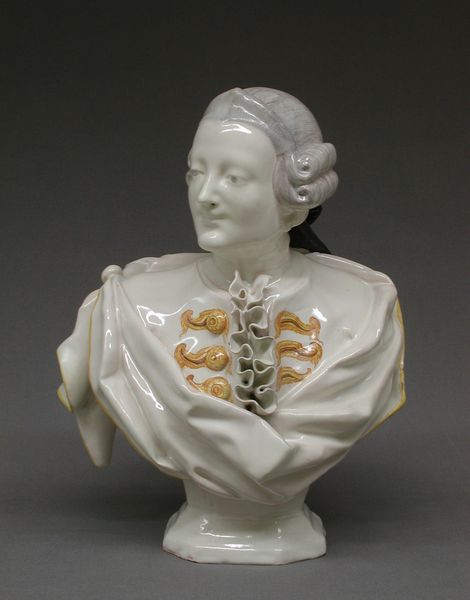
ceramic, sculpture, marble
#
neoclacissism
#
sculpture
#
ceramic
#
sculpture
#
academic-art
#
decorative-art
#
marble
Dimensions: Height: 9 3/4 in. (24.8 cm); Diam. of base: 3 7/8 in. (9.8 cm)
Copyright: Public Domain
Paul-Louis Cyfflé made this plaster bust of Voltaire in France, sometime in the second half of the eighteenth century. Voltaire was the pen name of François-Marie Arouet, the Enlightenment writer, historian, and philosopher famous for his wit and attacks on the established Catholic Church. The bust's classical style—the toga-like drapery and laurel wreath—lends Voltaire an aura of timeless authority and intellectual prowess. The choice of plaster, rather than bronze or marble, may reflect the widespread circulation of Voltaire's ideas among the middle classes. Plaster was cheaper than bronze and was often painted to mimic other materials. This made plaster busts the perfect medium for mass-producing images of celebrated intellectuals. This object acts as a reminder that our understanding of art is always historically contingent. To understand it better, we might research the history of plaster casting, the biography of Cyfflé, or the reception of Voltaire’s writings in different social and political contexts.
Comments
No comments
Be the first to comment and join the conversation on the ultimate creative platform.
